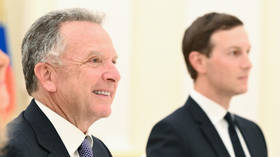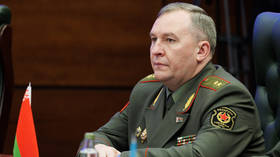Target - President: Russia's most notorious kill-plot fails

Russia’s 20th-century history saw dozens of assassination attempts on heads of state: almost every leader since the Bolshevik revolution of 1917 was targeted by plotters, but all were foiled by security services.
Vladimir Lenin, the first Soviet leader survived several assassination attempts, with the most notorious committed by a woman in 1918. Fannie Kaplan belonged to the Socialist Revolutionary party, which was persecuted by Lenin and his comrades as they seized power after the revolution. She took three shots at him as he delivered a speech to working men at one of Moscow’s factories. Kaplan was immediately detained. Under interrogation she said she wanted to kill Lenin because she considered him a traitor of the revolution and socialist ideals. She was executed three days later without trial or court decision in the very heart of Moscow – behind the Kremlin wall. The next Soviet leader, Joseph Stalin was targeted several times. There were at least three assassination attempts on him in the mid-1930s, one of which was to be committed by a group of German terrorists who planned to blow up Lenin’s Mausoleum – a building on Red Square where Lenin lies in state and from where Stalin used to deliver speeches to the nation. However the raiders disappeared soon after they entered the USSR, leaving no traces.In November 1942, a soldier tried to shoot Stalin’s car with a rifle on Red Square, he was executed eight years later. An assassination plot of a really historic scale was thwarted by Soviet and British secret services during the Second World War, in 1943 ahead of the Big Troika meeting in Tehran. German terrorist Otto Skorzeny planned to kill Winston Churchill and Joseph Stalin, and to kidnap Franklin Roosevelt. "Operation Long Jump" was the codename given to the unsuccessful plot, approved by Hitler himself. Six Germans were dropped by parachute on Iranian territory, and were on their way to Tehran when they were found by a group of Soviet agents led by Gevork Vartanian aged 19. The plan was exposed and the meeting of global importance went smoothly – at least in terms of security. By the end of his life Stalin turned absolutely paranoid: he suspected everyone around of plotting against him, including his closest allies.Four Georgian nationalists conspired against Nikita Khrushchev: they planned to kill him on a visit to the Georgian capital Tbilisi in May 1961. A month before the Soviet leader arrived, the men were arrested by secret services. Three were granted a pardon seven years later. Leonid Brezhnev had a close shave in June 1969 when he was fired upon during a ceremonial welcome of cosmonauts in Moscow. A Soviet Army lieutenant dressed as a policeman and armed with two pistols was shooting at the cortege, but he did not know in which car exactly Brezhnev was riding. He killed the driver and injured several security officers and cosmonauts in one of the cars. Brezhnev was extremely shaken, although he did not sustain any injuries. Fortunately, his car’s route was changed. Ahead of Brezhnev’s visit to Paris in June 1977, the KGB learnt a sniper would shoot at him during a wreath-laying ceremony at the Arc de Triomphe. Twelve thousand police and six thousand fire fighters were put on alert. Brezhnev laid the wreath and left safely. Another “overseas” plot was foiled in West Germany in May 1978. Brezhnev was taken out via an emergency exit as the KGB learned of the attempt in advance. At the risk of his life, Mikhail Gorbachev greeted a Communist demonstration on Red Square in November 1990. One man managed to sneak a rifle to the very heart of the city, which was flooded with police and secret servicemen. He attempted to kill Gorbachev, firing two shots, but did not injure either the president or the party leaders surrounding him. A vigilant policeman managed to snatch a rifle out of the killer’s hands. The assailant, who said he wanted to murder Gorbachev because “the president was responsible for totalitarian regime in the USSR,” was sent to a mental hospital, which he left three years later. Years afterwards, Gorbachev himself conceded it was a planned frame-up committed by the KGB aimed at intimidating him at the time of unstable situation in the country. The only person who planned to kill Russia’s first post-Communist president Boris Yeltsin was caught by a security officer in the attic of a government building in central Moscow. The 33-year-old army officer penetrated the building via scaffolding and admitted he wanted to kill the president. His plan was to go downstairs from the attic and attack Yeltsin with a knife. The would-be assassin was found to be mentally ill and sentenced to compulsory treatment, just like many of his predecessors.













